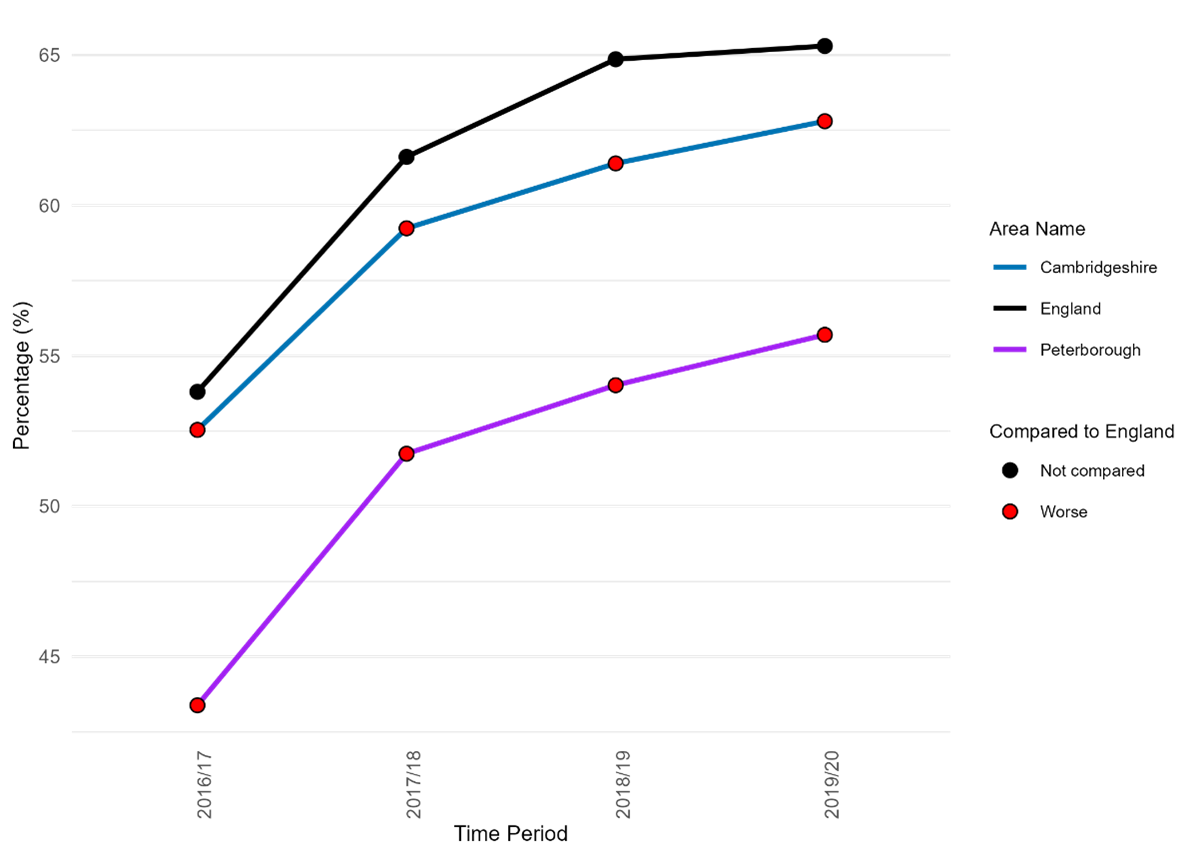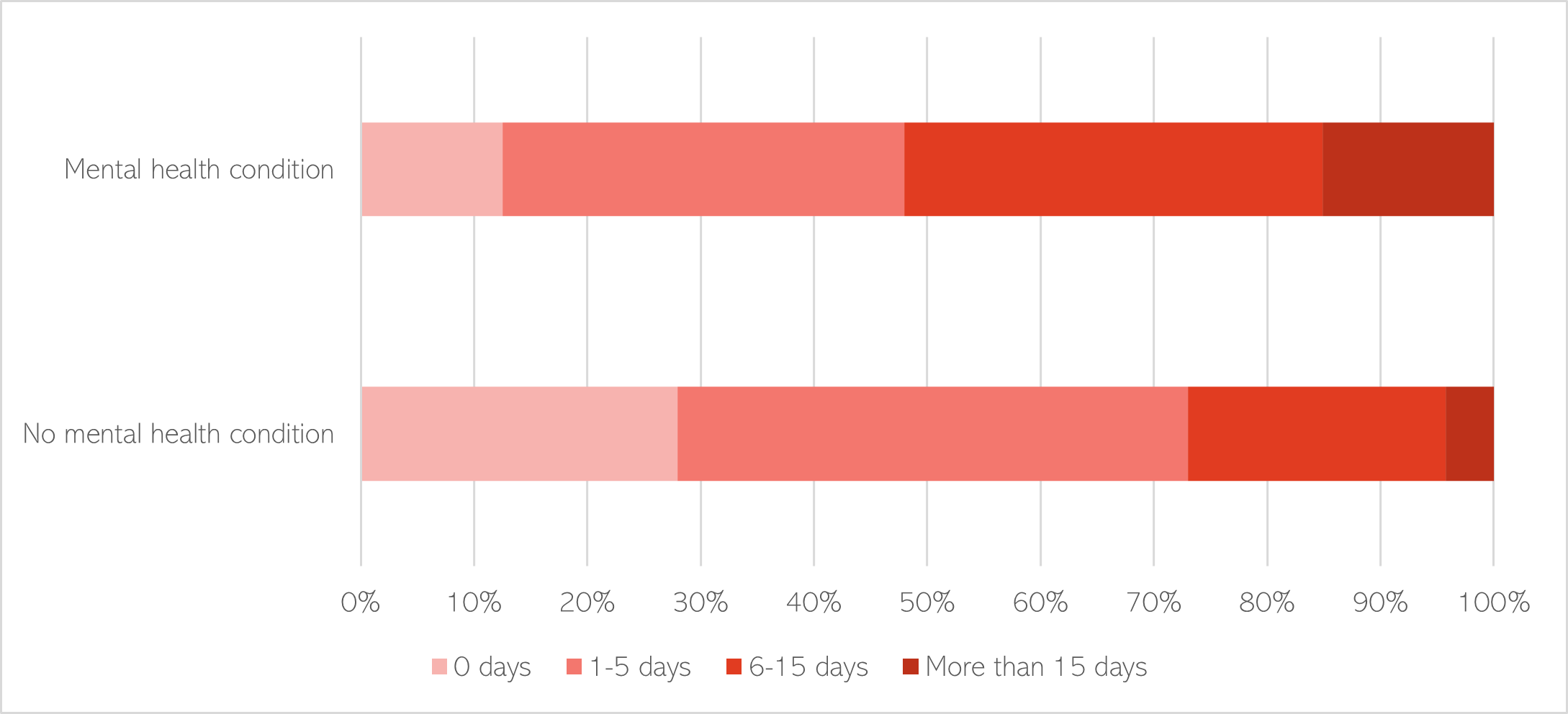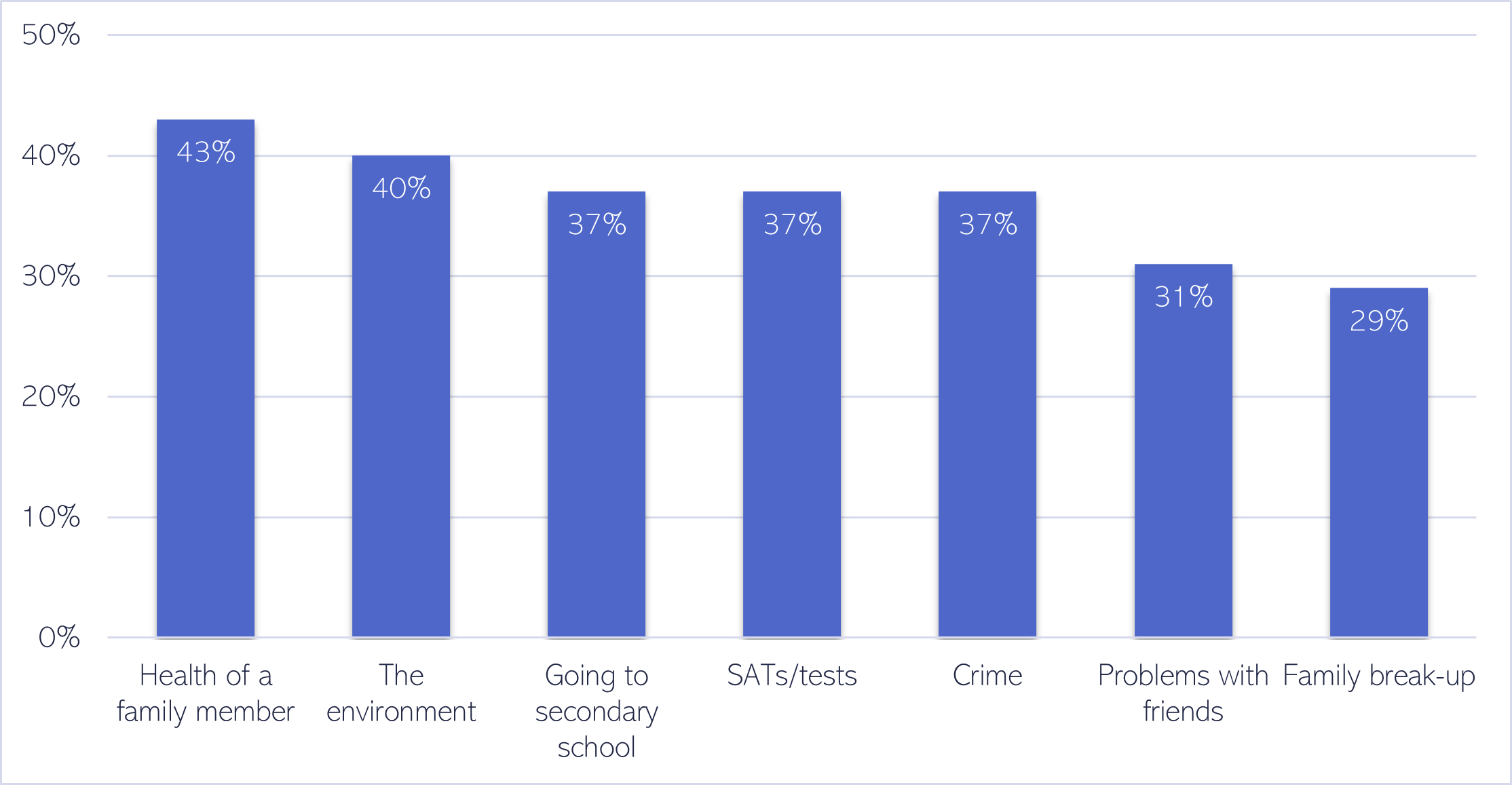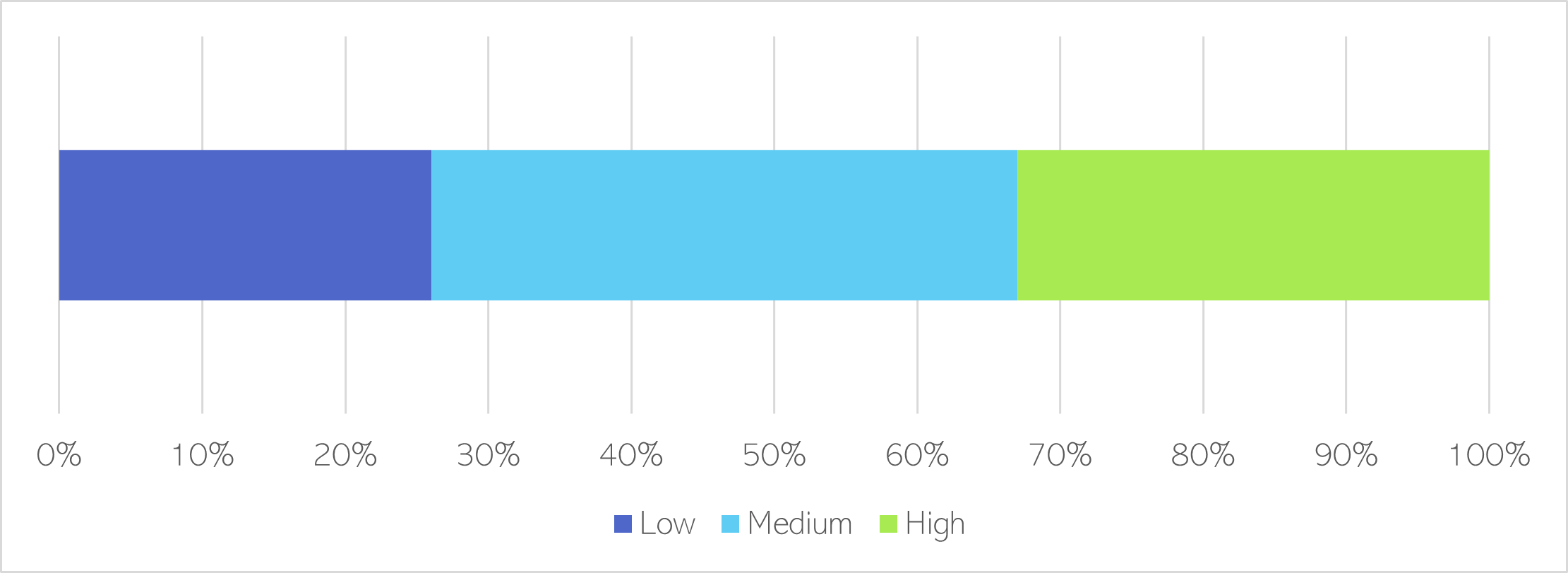Primary school (age 5 to 10)
- Children start primary school at age 4 or 5. Children starting primary school in 2023 will have been infants during the COVID-19 lockdowns; whilst children born in or after 2020 will only have known a ‘post-COVID’ world.
- Good mental health is key to a healthy and happy childhood; whilst enduring mental health problems make it harder for children to reach their full potential in school and their social lives (Khan, 2016).
Local strategies
Local strategies have highlighted the need for early identification and intervention for children experiencing poor mental health; holistic support for children and their families (such as around poverty and housing); and clear communications about what is available to support children’s mental wellbeing.
 Table 6: Summary of recent local strategies relating to the mental health of children aged 5 to 10.
Table 6: Summary of recent local strategies relating to the mental health of children aged 5 to 10.
Demographics
- In 2021, there were 54,455 children aged between 5 and 9 in Cambridgeshire and Peterborough, which is 6.1% of the total population (Office for National Statistics, 2022b).
- There was a 20.7% increase in this age group between 2011 and 2021 (Office for National Statistics, 2022b). This change did not occur evenly across the county: there was a 5.1% increase in East Cambridgeshire, but a 37.7% increase in Peterborough (Office for National Statistics, 2022b).
Mental health need
Based on the national NHS Mental Health of Children and Young People Surveys (NHS Digital, 2022), it is estimated that there are 6,229 children aged between 5 and 10 with a diagnosable mental health condition, autism or ADHD in Cambridgeshire and Peterborough (95% confidence interval: 5,629 – 6,887). Note that autism and ADHD are not mental health conditions, but have been included in these estimates as diagnoses are accessed through child and adolescent mental health services (via YOUnited).
Table 7: Estimated prevalence of mental health conditions in children (aged 5 – 10) in Cambridgeshire and Peterborough. Data source: Children and Young People Mental Health Dashboard. Note: lower and upper estimates are generated from 95% confidence intervals
The most common conditions are behavioural and emotional disorders. Full breakdowns, which include upper and lower estimates based on 95% confidence intervals, are included in the dashboard.
 Table 9: Estimated prevalence of mental health conditions in 5 to 10 year olds in Cambridgeshire and Peterborough, 2023. Data source: Children and Young People Mental Health Dashboard.
Table 9: Estimated prevalence of mental health conditions in 5 to 10 year olds in Cambridgeshire and Peterborough, 2023. Data source: Children and Young People Mental Health Dashboard.
Protective and risk factors
In Cambridgeshire and Peterborough:
- Bullying: 30% of Year 5 and 6 pupils in Cambridgeshire have been bullied in the past year (Cambridgeshire and Peterborough Integrated Care System, 2022f). Being bullied is associated with psychological distress and symptoms of mental illness (Takizawa et al., 2014).
- Educational attainment: in 2019/20, 63% of students in Cambridgeshire and 56% in Peterborough met expected standards in reading, writing and maths at the end of key stage 2, compared to the national average of 65% (Office for Health Improvement and Disparities, 2022). International studies have shown that pupils dealing with mental health problems (particularly depression) are likely to go on to have poorer school attainment (Riglin et al., 2014).
- School absences: 10.0% of primary school students are persistently absent from primary school in Peterborough, which is above the national average (8.8%) and the rate in Cambridgeshire (8.0%) (Office for Health Improvement and Disparities, 2022). Children with a mental health condition are more likely to be absent from school (NHS Digital, 2022), which puts them at risk of disrupting their education and exacerbating inequalities.
- School readiness: the proportion of children achieving a good level of development (known as school readiness) by the end of reception was lower than the national average in Peterborough (60.7%) in 2021/22 but was similar to the national average in Cambridgeshire (65.8%). School readiness is linked to wellbeing, health and educational attainment (Viv Bennett, 2015).
- Worries and self-esteem: a 2022 survey of Year 5 and 6 pupils in Cambridgeshire found that 32% reported having a lot of worries.
Bullying
Being bullied is associated with psychological distress and symptoms of mental illness (Takizawa et al., 2014). Bullying in childhood has been shown to have a long-term impact on individuals:
- One study found that children who were bullied in childhood (at age 7 and 11) were around twice as likely to experience depression and suicidality (suicidal thoughts and plans) as an adult (Takizawa et al., 2014).
- Another study found that adults who were frequently bullied in childhood were more likely to have contact with mental health services from childhood to midlife, compared to those who had not been bullied (Evans-Lacko et al., 2017).
- Nationally, LGBTQ+ young people are twice as likely to report having been bullied in the past year, compared to their non-LGBTQ+ peers (Just Like Us, 2021).
It is estimated that there are 4,000 secondary school students in Cambridgeshire and Peterborough who ‘often’ feel afraid to go to school due to bullying (Cambridgeshire and Peterborough Integrated Care System, 2022f). This estimate is based on the health-related behaviour survey, in which 30% of pupils (Year 5 and 6s) responded that they were bullied at or near school or away from school in the last 12 months. 25% had been bullied at/near schools and 14% had been bullied away from school.
Educational attainment
- International studies have shown that pupils dealing with mental health problems (particularly depression) are likely to go on to have poorer school attainment (Riglin et al., 2014).
- Nationally, 92% of children who do not meet expectations in English and Mathematics at the end of primary school, do not pass English and Mathematics GCSE (Farquharson et al., 2022).
In 2019/20, 63% of students in Cambridgeshire and 56% in Peterborough met expected standards in reading, writing and maths at the end of key stage 2, compared to the national average of 65% (Office for Health Improvement and Disparities, 2022). Although they have increased over the past 5 years, both areas have been consistently below the national average in this measure.
 Figure 16: Key stage 2 pupils (age 10-11) meeting the expected standard in reading, writing and maths. Data source: Fingertips
Figure 16: Key stage 2 pupils (age 10-11) meeting the expected standard in reading, writing and maths. Data source: Fingertips
School absences
Children with a probable mental health condition are more likely to be absent from school (NHS Digital, 2022), which puts them at risk of disrupting their education and exacerbating inequalities. Twice as many children aged 7 to 10 with a probable mental health condition missed over 3 weeks of school in 2022 (9%), compared to those unlikely to have a mental health condition (4%).
 Figure 17: Number of missed days of schooling by mental health of 7- to 10-year-olds in 2022. Data source: (NHS Digital, 2022). Note this survey did not give a full assessment of mental health, and instead estimated the likelihood that a child or young person had a mental health condition, classifying this as either: unlikely, possible or probable.
Figure 17: Number of missed days of schooling by mental health of 7- to 10-year-olds in 2022. Data source: (NHS Digital, 2022). Note this survey did not give a full assessment of mental health, and instead estimated the likelihood that a child or young person had a mental health condition, classifying this as either: unlikely, possible or probable.
- A national survey carried out in summer term of 2021 (the academic year most impacted by COVID-19) found that many schools were experiencing above average levels of pupil attendance issues, and that pupil anxiety was the most common reasons for absence from school (Department for Education, 2022b).
- Young carers, children who are not accessing the support they need with their mental health and children with special educational needs and/or disability (SEND), and children with a history of exclusion and absence are at higher risk of persistent absence (Children’s Commissioner, 2023a).
- Nationally, the number of children who missed 50% of more possible education sessions almost doubled from the 2018/19 to the 2021/22 school year (Children’s Commissioner, 2023a). Many of these absences for reasons other than just illness, suggesting this cannot be explained by COVID-19 infections preventing people from attending school.
In Cambridgeshire and Peterborough:
- In 2021/22, overall absence rates from primary schools were 6.3% in Cambridgeshire and 6.6% in Peterborough, compared to 6.3% nationally. These are the highest rates in the past 6 years.
- Rates of persistent absences (attendance rates below 90%) from primary school have increased substantially in recent years, in line with national trends. 19.4% of primary school students are persistently absent from school in Peterborough, higher than the national average (17.7%) and the rate in Cambridgeshire (16.5%) (Office for Health Improvement and Disparities, 2022).
Figure 18: Persistence absences from state-funded primary schools, 2014/15 – 2020/22. Data source: Fingertips
Note: persistent absences are defined as attendance below 90%, the equivalent of missing one day a fortnight of school. There is no data for 2019/20.
School readiness
- School readiness is linked to wellbeing, health and educational attainment. Children who have low self-esteem or self-confidence, or poor socio-emotional skills, may find the transition to primary school particularly challenging (Viv Bennett, 2015).
- The current cohort of children starting primary school went through the COVID-19 lockdowns when they were toddlers. There are reports that a higher proportion of these children lack confidence when interacting with their peers and of increases in referrals for support around language and communication needs (Unicef, 2022).
Nationally, levels of school readiness vary by child characteristics. In 2021/22 (Department for Education, 2022a):
- Boys, children who did not have English as their first language, and children who were eligible for free school meals are all less likely to have a good level of development.
- More than 7 in 10 Chinese, Indian, and White and Asian children had good levels of development, compared to less than 4 in 10 Gypsy/Roma children and children with Irish Traveller heritage.
- 55% of children in the most deprived decile had a good level of development, compared to 75% in the least deprived decile.
- Children born in the autumn were more likely to reach a good level of development than children born in the summer months.
In Cambridgeshire and Peterborough in 2021/22:
- The proportion of children achieving a good level of development at the end of reception in Peterborough was significantly lower than the national average and has been since 2013/14. The proportion in Cambridgeshire has been statistically similar to the average since 2012/13.
- Almost 1 in 4 children leaving reception had communication and language skills below expected levels in Peterborough, which is significantly lower than the national average (Office for Health Improvement and Disparities, 2022).
- Over 1 in 4 children did not meet the expected level in their Year 1 phonics check in Cambridgeshire and Peterborough. Although the proportion of children achieving the expected level has been increasing since 2011/12, this still falls below the national average in both Cambridgeshire and Peterborough.
- Levels of school readiness declined compared to previous years, which may be linked to disrupted early years education because of the COVID-19 pandemic. Further trend data is included in the dashboard.
Table 10: Percentage of children achieving aspects of school readiness in Cambridgeshire and Peterborough, 2021/22. Data source: Fingertips. Note: red indicates scores are worse than the national average, orange that they are statistically similar, and green that they are better. Children are defined as having reached a good level of development if they achieve at least the expected level in the early learning goals in the prime areas of learning (personal, social and emotional development; physical development; and communication and language) and the early learning goals in the specific areas of mathematics and literacy.
Worries and low self-esteem
High self-esteem is associated with good mental wellbeing and is protective for mental health, whilst poor self-esteem is associated with a wide range of mental health conditions (Mann et al., 2004). A large scale national survey carried out in Spring 2021 found that 1 in 5 children (4 to 17) were worried about their mental health, which made mental health children’s largest worry (Children’s Commissioner for England, 2021).
A sample of Year 5 (1036) and Year 6 students (1258) in Cambridgeshire completed the health-related behaviour survey in 2022. 84% of pupils said they worried about one of the problems ‘quite a lot’ or ‘a lot’, with the most common worries being around the health of family members and the environment. Almost a third (32%) worried about more than 5 of the issues listed. Boys and children from the least deprived quintiles were less likely to have multiple worries, whilst children receiving free school melas or who had a disability or long-term illness were more likely to do so.
Figure 19: Percentage of pupils responding that they worry about the following ‘quite a lot’ or ‘a lot’ (top 7). Data source: Health-related Behaviour survey 2022
Self-esteem scores (based on social confidence and relationships with friends) showed that 35% of pupils had a high self-esteem. Boys were more likely to have high self-esteem (37%), whilst children who identified their gender in some way other than boy/girl (5%) and children with a disability or long-term illness (21%) were less likely.
Figure 20: Self-esteem scores of Year 5 and Year 6 pupils. Data source: Health-related Behaviour survey 2022
Other measures relevant to mental health included:
- 61% of pupils agreed that their school teaches them to deal with their feelings positively
- 7% of pupils said that the amount of sleep they normally get is not enough for them to concentrate at school
- 3% of Year 6 pupils responded that they had an alcoholic drink (not just a sip) in the last 7 days
What do children and their families say is important in promoting mental health?
In 2021, the Children’s Commissioner carried a survey of over half a million children and young people in England (equivalent to almost 6% of this age group) (Children’s Commissioner, 2022). Children reported that spending time online can create pressures in their lives, with online bullying having a particularly strong impact on their mental health. Children say that they want more access to safe places where they can play and socialise; and more time set aside to have fun and focus on activities they enjoy, such as sport, hanging out with friends and listening to music (Children’s Commissioner, 2022).
‘There need to be more outdoor places with free activities. A healthier environment for everyone with sports being more affordable. I think PE needs to be more regular in schools because it is just as important as maths and all of that because it can make people happier, healthier, more focused and active’ – Girl, aged 10 (Children’s Commissioner, 2022)
National research shows that children believe that there should be adults at school that will listen to their concerns and act if there is a problem (Children’s Commissioner, 2022). They would like school to be a place of support, where talking about mental health is normalised and they are able to receive mental health support (Children’s Commissioner, 2022). Children would like to have options about where they can access early support for their mental health, so they can choose what is best for them (Children’s Commissioner, 2022).
‘Adults can help the child out by having calm time with the adult. It can help their mind to calm down’ – Girl, aged 9 (Children’s Commissioner, 2022).
Additional resources
- Missed opportunities: 5-10 years old
- Making the grade: How education shapes young people’s mental health
- Promoting children and young people’s mental health and wellbeing A whole school or college approach
References
Full list of references is included at the end of this chapter.





